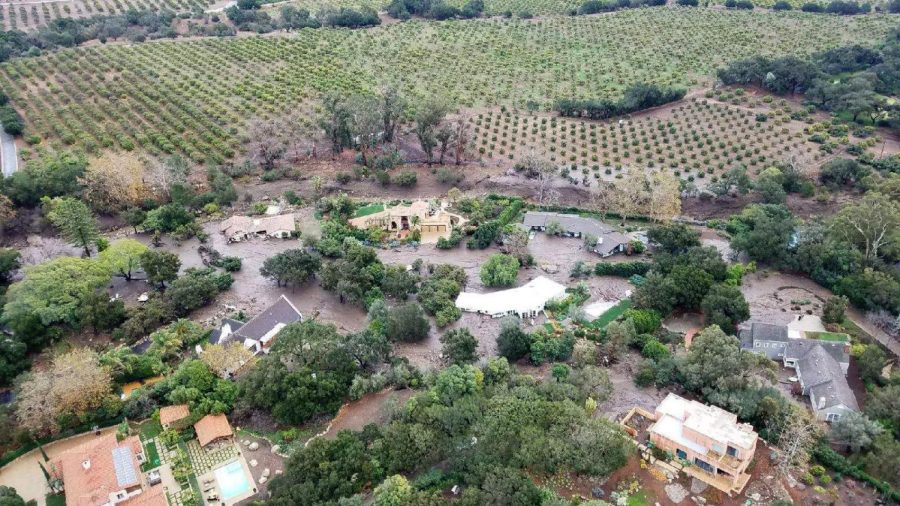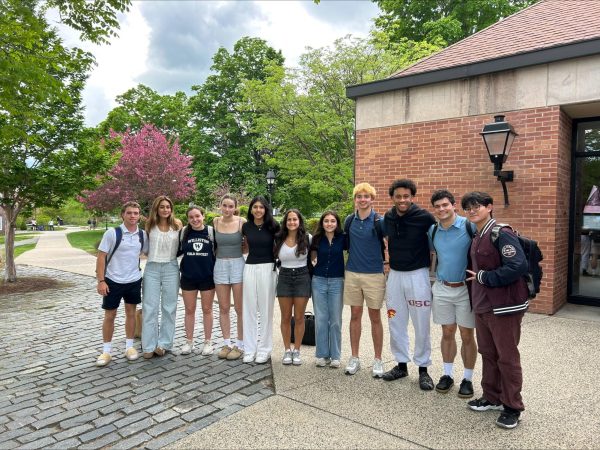Mudslides Ravage Southern California
After terrible wildfires destroyed tons of land, Californians in one town are now recovering from massively damaging and deadly mudslides.
The Thomas fire, the largest wildfire in California’s recorded history, burned more than 281,000 acres in Santa Barbara and Ventura counties from early December into this month. It wasn’t fully contained until Jan 15, according to CNN. Then on January 9, a mudslide swept through Montecito, California, a city of roughly 9,000 people just east of Santa Barbara. The death toll has risen to 20 and four are still missing.
The age range of people who have been killed is from three to 89. More than 1,250 emergency workers are trying to find those who are trapped.
The storm hit hard between 3 am and 6 am, with dispatchers receiving more than 600 hundred calls for assistance.
Twenty-eight people were hurt in Santa Barbara County, officials said. Floodwaters and mudslides destroyed 100 homes and damaged another 300 residences in Santa Barbara County. US 101 in parts of Montecito and Santa Barbara will remain closed for at least 48 hours because of the muddy debris covering it according to CNN.
Geologists and forecasters warned that intense rain could trigger deadly mudslides from the scorched areas. Montecito may be at slightly less risk now, because this week’s flooding already brought down vulnerable material according to CNN.
Science Teacher Mr. Ketcham explained how the mudslides occurred.
“My understanding of the situation out there was that the recent wildfires had removed much of the vegetation that would normally utilize and hold rainwater,” he said. “Without that vegetation, the heavy rains exacerbated an already bad situation by allowing a good deal of rain-water run-off, as well as destabilizing the soil creating the disastrous effect of mudslides. Without the live vegetation, the water acts as a lubricant to the soil and the soil will then slide down a hillside.”
Ketcham expressed sympathy for the people affected. “Not good if your house is at the bottom of that hill,” he said. “It has been a tough few months for those Californians.”
Rob Lewin, director of the Santa Barbara County Emergency Management Office, said to NBC News on Saturday Jan 12, that the blocked drainage channels in the Montecito area of the county meant that even if a storm of less intensity hit, the area could see “more mud and flow.”
Senior Xander Rogers is from California, but does not worry about mudslides.
“Personally, I live in an area that is backed by dry hillsides that have been severely burnt by the recent wildfires and in my honest opinion, I do feel safe,” he said. “Although I live on a hill and am well aware of the amount of debris and loose dirt that can be swiftly uplifted from the rain, the geography of my location is set up to create a sort of rain shadow effect.”
“This means that in my area we do not receive a lot of the rain that the rest of the county might get so we have a lesser chance of being affected by flash floods and heavy rain,” he added. “I have not yet experienced any mudslides in my area, and I have only been affected once when I was very young by a flashflood/mudslide which was closer to the Santa Barbara area.”
Senior Andikan Ntia-James, said, “It’s a shame if you are caught in a mudslide, you can’t really do anything to get out and survive it. Can’t really swim through the mud or outrun it, you just sit and pray for the best.”
Andikan, who lives in Nigeria, added, ” I am sad about the fact that those affected didn’t really have a fighting chance and it’s a real shame twenty lives have already been taken by this natural disaster.” He added, “No, I don’t really think we can get huge mudslides where I live in Lagos. I am afraid of floods and thunderstorms though, those can be scary and very devastating for anyone who isn’t prepared.”
Mark Woort-Menker is a PG student from Fort Lauderdale, Florida. He is originally from Westchester, New York and just moved to Florida. He enjoys playing...










